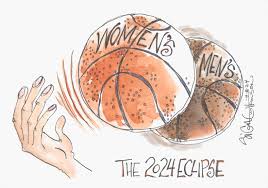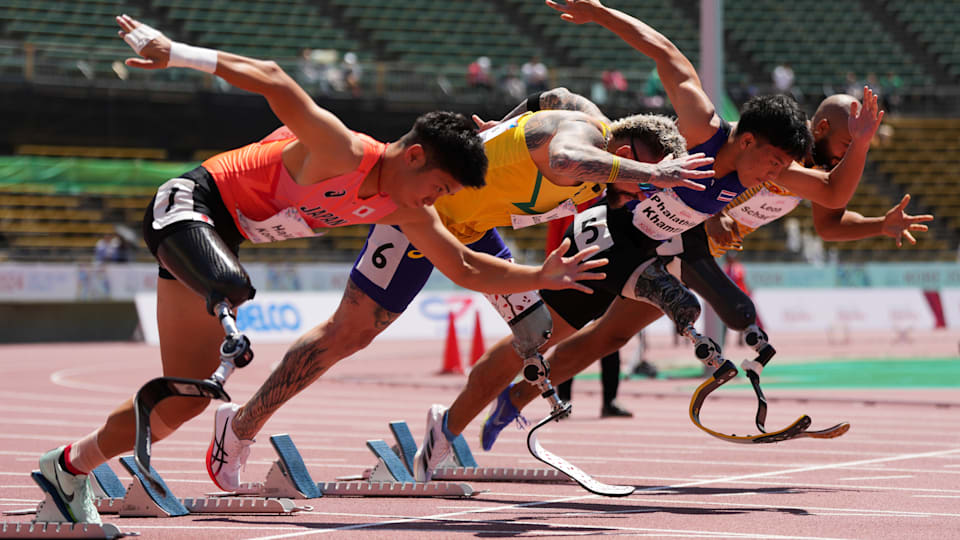1
Section One: The Fundamentals
A) What do we know about sport? What are common assumptions we make about sport and society?
| Sports promote Teamwork and Unity
While sports are supposed to bring people together/unite them, that doesn’t always happen. From my own experiences in sports, I can say that sometimes teammates can argue or compete against each other for attention, which can create division instead of unity. For example, someone who’s been on a team with a lot of drama or conflict might say that sports don’t always promote teamwork. If the coach doesn’t handle things well or there is too much pressure to win, the team could feel more divided than united. Rivalries between teams can also lead to fights or bad feelings among players, making it harder to focus on working together as a team. |
Exercise 3: Notebook prompt
What are some other metanarratives about sport that you are familiar with? Find an image or video clip or draw something yourself that captures this idea…
So what? Why does any of this matter? Does it matter? As something we grow up with – live with – play through – we don’t often interrogate the meanings of sport, and perhaps we don’t want to.
But being aware of these assumptions and metanarratives is especially important, I would argue, because of the centrality of sport to our everyday lives, the role that sport plays in shaping our childhood and worldviews and….. [finish that thought]
| Sports are deeply woven into our lives. They shape how we grow up, how we interact with others, and even how we see ourselves and the world. The stories and ideas we associate with sports, called metanarratives, matter because they influence how we experience sports and how society works. For example, the idea that sports are a fair playing field where anyone can succeed promotes the belief in meritocracy. Where success is based on effort and ability, rather than factors like gender, ethnicity, or socioeconomic status. But this can hide real barriers like poverty, racism, or gender discrimination, making it harder to see the need for change.
Another metanarrative is that sports bring people together and foster national pride. While this can be true, it can also distract us from inequalities within communities or nations. Events like the Olympics can create a sense of unity but may also reinforce divisions between countries or gloss over issues like political oppression or economic disparity. The belief that sports are a way to escape poverty is powerful, but it often ignores how rare those success stories are and how much systemic change is needed to create real opportunities for everyone. Similarly, the language of sports as “battles” or “wars” can shape how we think about competition, sometimes promoting aggression or exclusion instead of cooperation and inclusion. Sports also influence our views on health and body image. While they can encourage physical activity and teamwork, they can also create unrealistic standards and pressure, leading to mental health struggles or burnout. By examining these metanarratives, we can better understand the hidden messages sports convey and the impact they have on our culture, values, and individual lives. This awareness helps us challenge unfair systems, promote inclusivity, and ensure that sports truly reflect and support the diverse communities they serve.
But being aware of these assumptions and metanarratives are especially important, I would argue, because of the centrality of sport to our everyday lives, the role that sport plays in shaping our childhood and worldviews and………the way it influences our understanding of success, identity, and community. Sports are not just games, they are powerful tools that teach us what is valued in society, like competition, perseverance, and teamwork. At the same time, they can reinforce stereotypes, create divisions, and maintain inequalities. By recognizing the underlying metanarratives tied to sports, we can start asking questions about who benefits, who gets left out, and how sports influence what we believe is important. Being aware of these things helps us make sure that sports are fair, welcoming, and help bring about positive change for everyone. |
B) What is social justice?
Exercise 4: Padlet Prompt
Think back to the last section and try to look at some of the ideas we discussed differently. How might sport and social justice actually co-exist?
Record any images, video clips, or gifs you added to the padlet and identify a point of intersection between sport and social justice (can be an issue or a barrier or a debate or something you would like to explore in more depth in this course) . Screenshot or paste in your response below.
Access and Oppourtunity
Community engagement
Education and Empowerment
|
C) Social Justice Reading
(note: this activity is optional!)
D) KINESIOLOGY AND SOCIAL JUSTICE
Exercise 5:
Exercise 6:
What are the implications of bodies-at-risk discourse and the refusal to understand the health gap from a social justice perspective, according to the authors of this article?
| The “bodies-at-risk” idea focuses on the belief that staying healthy is mainly an individual responsibility. According to Harrison, Azzarito, and Hodge, this way of thinking has serious problems. It ignores bigger issues like poverty, discrimination, and lack of access to healthcare, which actually cause a lot of health problems for marginalized groups.
When we view health as something people must manage on their own, we stop looking at the unfair systems that make it harder for some groups to stay healthy. This approach shifts the blame to individuals instead of addressing the real reasons behind health inequalities. The authors also point out that treating health as a “product” to buy or achieve makes it harder for people with fewer resources to be healthy. It keeps the focus on individual choices instead of fixing the unfair systems that create health gaps in the first place. Without looking at health as a social justice issue, these gaps will continue to grow. |
Section Two: Sport Feminism
Exercise 7: Notebook Prompt
What is feminism? What does it mean to you? Choose one of the images below and explain how it captures your understanding of feminism (or find one that does speak to you and paste this into your pressbook with an explanation of why it matters to you.
| Feminism is about equality for all genders and fighting against unfair systems that disadvantage women and marginalized groups. It’s about creating a world where everyone has the same opportunities and respect.
To me, feminism means fairness, equality, and standing together to make society better for everyone. It’s about listening to others, understanding their struggles, and taking action to create change.
This image of diverse people marching and protesting together represents feminism to me. It shows unity and the shared effort to fight for equality. This matters because feminism isn’t just a big movement, it’s also about everyday actions that make life fairer for everyone. |
Exercise 8: Notes Prompt (optional)
NB: Cornell notes is a great resource that teaches effective notetaking. Unfortunately, our system can’t save notes taken in the H5P app, so this is fully optional.
Exercise 9: Crossword Activity
Exercise 10: Padlet Prompt
| Black feminism focuses on the struggles of Black women who face both racism and sexism at the same time. It highlights how these issues are connected, a concept called intersectionality. Black feminism works to make sure Black women’s voices are heard, as they have often been left out of both feminist and racial justice movements. It fights for fair treatment in areas like healthcare, jobs, education, and the justice system, aiming to create equality for everyone by addressing the challenges Black women face.
Queer feminism focuses on the experiences of LGBTQ+ people and challenges traditional ideas about gender and sexuality. It points out that mainstream feminism often ignores the struggles of queer people and works to include everyone, no matter their gender identity or sexual orientation. Queer feminism fights against rigid rules about how people should behave based on their gender and promotes acceptance and self-expression. Both Black feminism and queer feminism focus on how different kinds of discrimination, like racism, sexism, and homophobia, are connected. They push feminism to be more inclusive, making sure all voices are heard and fighting for fairness and freedom for everyone. |

| I think that the landscape for women’s sports is definitely changing, and more people are starting to care and pay attention. Athletes like Angel Reese and Caitlin Clark have brought incredible talent, passion, and visibility to women’s sports, sparking conversations and drawing larger audiences. Events like the NCAA Women’s Basketball Tournament and the FIFA Women’s World Cup have seen record-breaking viewership, showing that there is growing enthusiasm for women’s sports when they are given the spotlight.
However, challenges remain. Women’s sports often receive less media coverage, sponsorship, and funding compared to men’s sports. The symbolism in the basketball illustration, “women’s” eclipsing “men’s”, reflects a powerful shift but also highlights the work still needed to achieve true equality. While progress is being made, continued advocacy, investment, and representation are essential to ensuring women’s sports are valued and supported as much as men’s sports. |

 Image depicts Meritocracy in sports – An image of a diverse group of Paralympic athletes competing in a track and field sprint, highlighting the idea that success in sports is based on individual effort and talent.
Image depicts Meritocracy in sports – An image of a diverse group of Paralympic athletes competing in a track and field sprint, highlighting the idea that success in sports is based on individual effort and talent.
